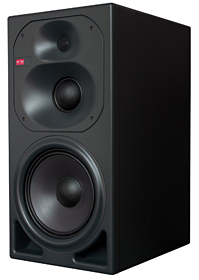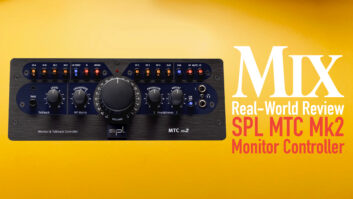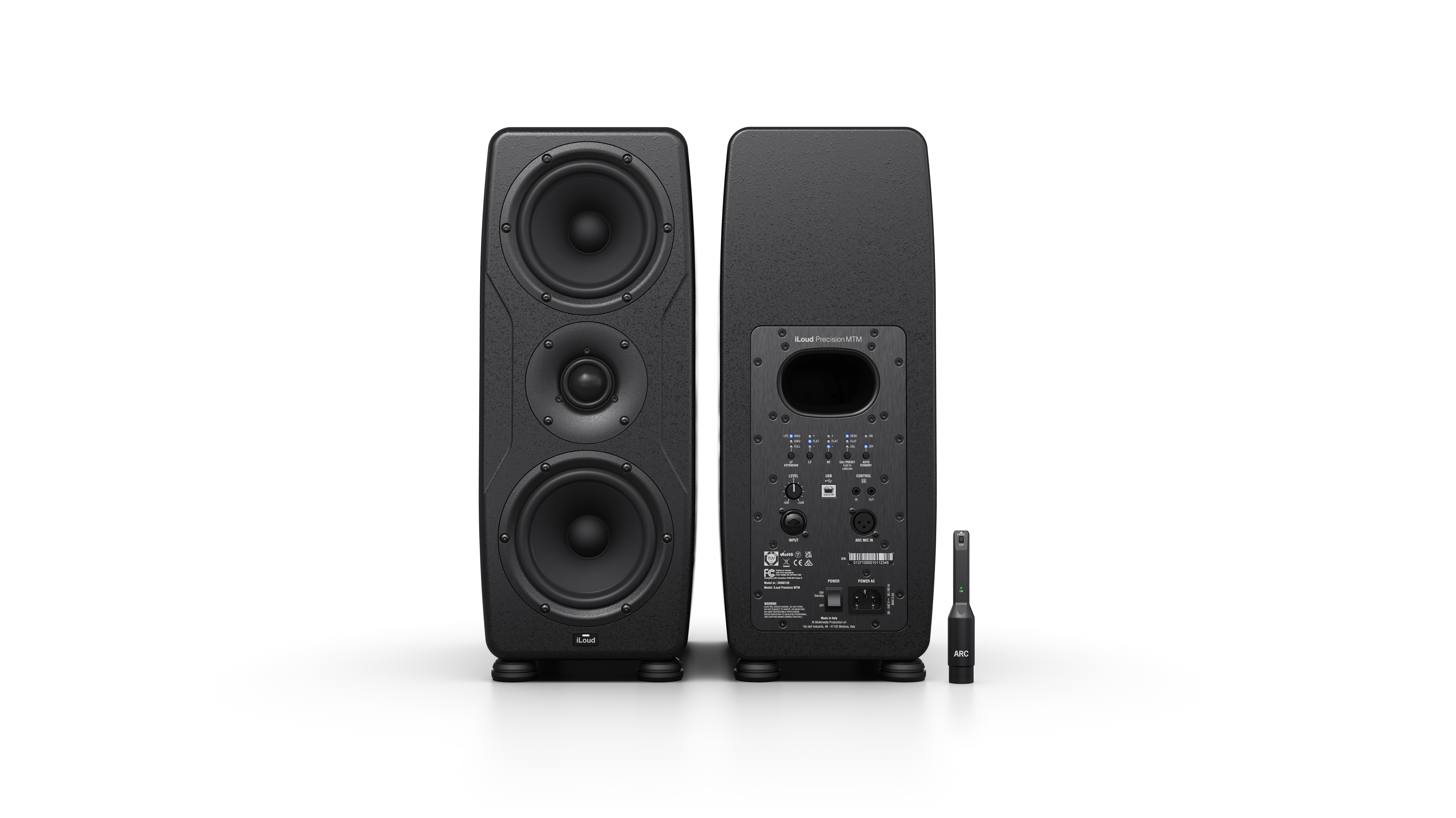
The O410s’ large cabinet and 10-inch woofer combine to offer a commanding presence in low frequencies.
Klein+Hummel’s monitors have been a staple in high-end studios for more than four decades, and the company is now introducing the O410 mid-field monitors. Sporting three drivers powered by 800 watts peak of Class A/B amplification, the O410s replace K+H’s older O400s as the manufacturer’s answer for small- to mid-sized studios requiring more volume than near-fields, along with accurate, precise playback for detailed mixing and mastering tasks.
Given the high standards set for these monitors, I put them through their paces using a top-end signal chain with a Prism Orpheus interface and Zu Wylde cables. Over the course of a month, I spent a great deal of time simply listening to familiar material and completed a number of mastering projects with the O410s.
Out of the Box
“Klein” means “small” in German, but as the delivery service wheeled two massive crates into my studio, I knew there was nothing tiny about the O410s. Each monitor packs 80 pounds of top-grade components into a frame that’s 2 feet tall and 1.5 feet deep, so getting them up on stands was a two-person affair. Once in position, they cast an impressive — and somewhat imposing — shadow over my studio. I used them vertically; however, the mid driver/tweeter pod rotates 90 degrees to maintain phase coherence when used horizontally.
The rear panel has an analog XLR input and gain trim, along with three fixed high/mid/low EQs and a single parametric for fine-tuning the 20 to 200Hz range. It’s good to know these tools are available, but after auditioning the speakers freestanding in my room, I felt the flat settings hit the nail on the head. Positioning the monitors about three feet from the back wall provided the tightest bass response, and the stereo field came into sharper focus after toe’ing each unit in about 15 degrees.
First Impressions
Having used two-way PMC LB1s with a Bryston amp and Tannoy subwoofer for quite some time, I was worried that I’d need more time than I could spare to adjust to this full-range, three-way system. Actually, the opposite was true — listening on the O410s was like slipping on a pair of comfortable shoes after running a marathon. I was struck by the O410s’ capacity to fill my studio with balanced sound, far beyond the capacity of my much smaller LB1s, while maintaining a clear, defined stereo field.
The O410s’ 10-inch woofer and generously sized cabinet brought bass notes into focus, offering a level of clarity and resolution that my previous setup simply couldn’t match in the lower registers. As a dance-music producer and remixer, I deal with hard-to-handle sub-bass on a daily basis, and finding monitors that accurately reproduce these frequencies has always been a challenge. In this area, the O410s knocked it out of the park without breaking a sweat. The woofer, backed by 400W of power, belts out deep bass that’s phenomenally tight without any of the looseness or boominess sometimes attributed to bass-reflex designs.
Plenty of Power
The O410s’ capacity for accurate, high-SPL delivery was put to the test with Trentemøller’s “Take Me Into Your Skin” from The Last Resort album, a seven-minute electronic epic that opens with tightly gated percussion and crescendos into a sonic onslaught of drums and synths. The kick drum in this song is a slab of tight bass, and the O410s belted it out with authority, literally filling the room with thick low end that cut off sharply without boominess or resonance, leaving a sonic vacuum between beats that enabled other elements in the mix to shine through. Hi-hat and tweaky top-end percussion were crisp, almost syrupy, and never came across as unpleasantly sharp, nor were they painfully loud no matter how much I cranked the volume. Even in the thickest portions of the mix, individual elements in every frequency range were easy to spot, and the stereo field didn’t feel cluttered or murky.
Aside from bass handling, the 4010s’ other impressive feature was the capacity to create a stereo image that’s not just wide, but also thick with depth and texture. While auditioning tracks from the SACD remaster of Pink Floyd’s Dark Side of the Moon, Roger Waters’ vocals were solidly in the center of both monitors, with an added third dimension imparting an extra sense of tangibility, where elements of the mix hung not just between the speakers, but also behind them. The ability of these huge monitors to dissolve into a single cohesive soundstage is nothing short of amazing.
It’s difficult to find fault with the O410s’ remarkably balanced sound. I did, however, note a slightly forgiving aspect to the sound in the midrange registers between 1 and 3 kHz. While I was mastering a dense rock project with heavily distorted guitars, it was a little too easy to push EQ in this area, and the client called back, wondering if I could tone down the brashness somewhat. Chalk it up to the euphonic nature of the O410s — they don’t misrepresent this area, but they simply sound so good that it takes a little practice to hone in on their vibe. After realizing this characteristic, it was a snap to adjust my workflow accordingly, and subsequent masters had perfect balance.
And the Winner Is…
Given their expensive pedigree, it’s no surprise that the O410s are amazing speakers that admirably vindicate their stratospheric pricing. Imaging is superb; clarity and precision are extraordinary. While they are spec’d to handle LF only down to 30 Hz, their low-end accuracy is superb, making bass-heavy mixing — sans subwoofer — an absolute joy. Engineers involved in dance or urban music will be hopelessly in love with the O410s. These are a pleasure to work with, and a worthwhile investment for studios seeking a mid-field monitor that delivers serious volume while staying true to the music.
Jason Blum’s current endeavors are focused on commercial mixing and mastering in his Los Angeles studio.








